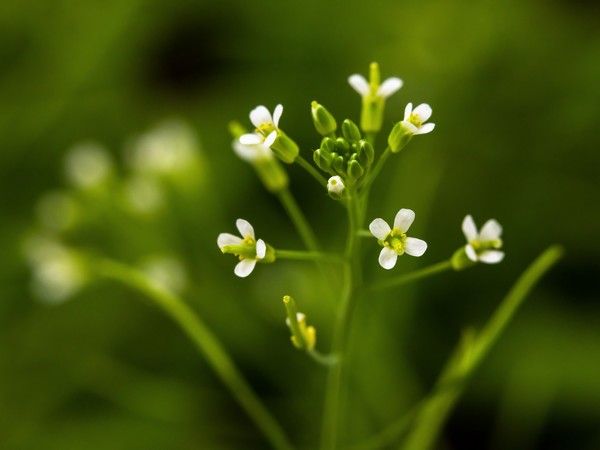Sexual reproduction of flowering plants is affected by a plant hormone from the brassinosteroid group, essential for the proper development of eggs in the ovary and early seeds shortly after fertilisation. Interestingly, brassinosteroids are chemically related to the sex hormones in animals and humans. This discovery by scientists from Argentina and the Czech Republic could be important in the future in the search for methods to increase crop yields. The research results were published by the renowned scientific journal Proceedings of the National Academy of Sciences of the United States of America (PNAS).
This is the first evidence of the involvement of brassinosteroids in plant reproduction processes. Ondřej Novák and Jana Oklešťková from the Laboratory of Growth Regulators, a joint workplace of the Institute of Experimental Botany of the Czech Academy of Sciences and Palacký University Olomouc, participated in the research on the Czech side. Researchers from this laboratory are world-renowned experts in the field of biochemistry, molecular biology, and chemical analysis of plant hormones.
“We were approached by colleagues from Argentina who have been studying the development of female reproductive structures in plants for a long time. They were interested in the function of the ADX and ADXR genes in plants, which are involved in the production of steroid substances in animals. Therefore, we measured the amount of these compounds in samples of Arabidopsis thaliana, a much-studied model plant,” explained Novák.
Steroids are a large group of chemically related compounds, which include for example cholesterol, and many animal hormones including sex hormones and the brassinosteroid plant hormones.
The Argentinian-Czech team has shown that both studied genes indeed play a role in the synthesis of steroids in plants. That in itself would be an important finding. However, researchers have also found that plants with non-functional ADX and ADXR genes have serious reproductive problems. Either the eggs in the ovaries did not develop properly, or seed development in the eggs stopped shortly after fertilisation, so that viable seeds did not form.
As further research has revealed, one of the brassinosteroid plant hormones, called 28‑homocastasterone, is crucial in these processes of sexual reproduction. “I was surprised that this substance proved to be the most effective here. In general, the brassinosteroid called brassinolide is considered to have the strongest biological effects, but we did not manage to prove it in the studied samples,” said Jana Oklešťková.
Hormones belonging to steroid compounds are therefore essential for the sexual reproduction of not only animals but also plants. This is a very interesting finding, one which will help to better understand both plant reproduction and the evolution of hormonal regulation in multicellular organisms. Future research could also focus on whether 28-homocastasterone or substances derived from it can be used to support seed or fruit production, thus increasing the yields of some agricultural crops.
